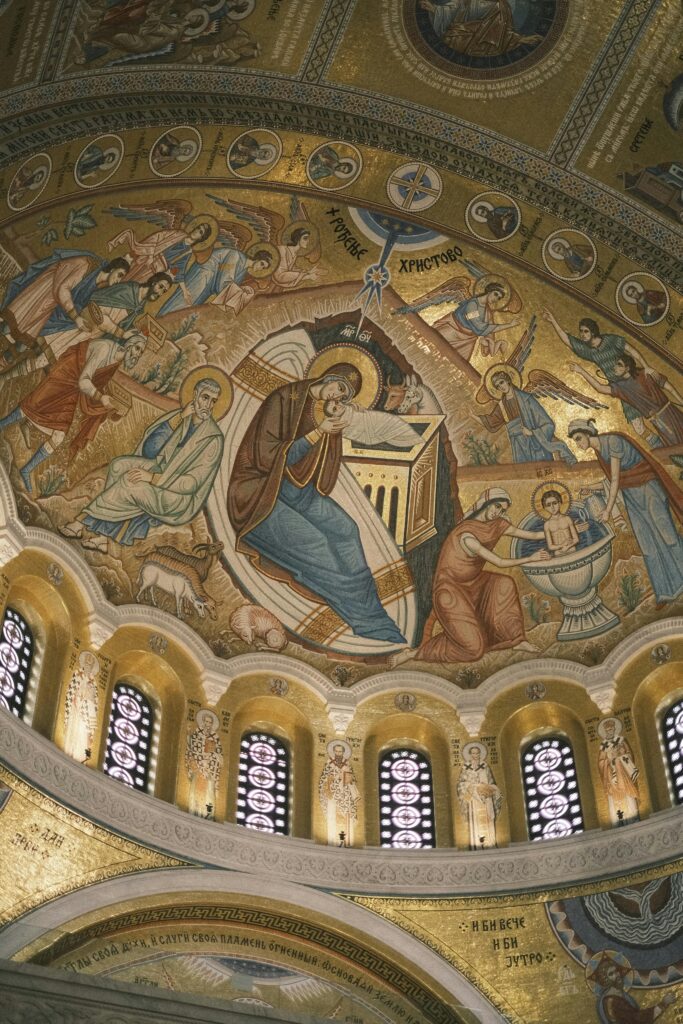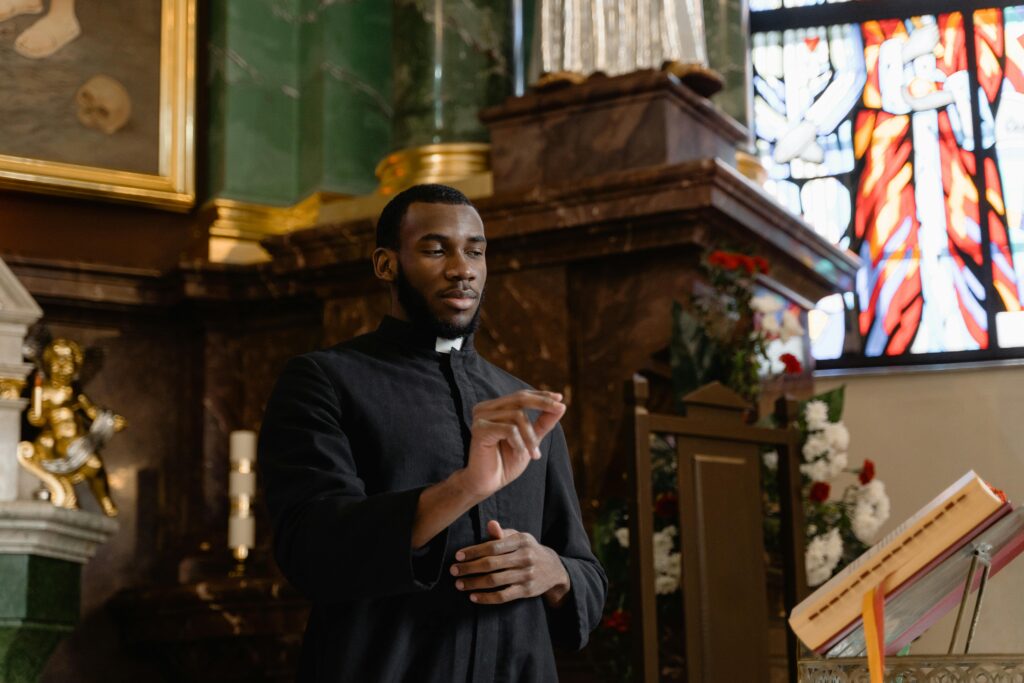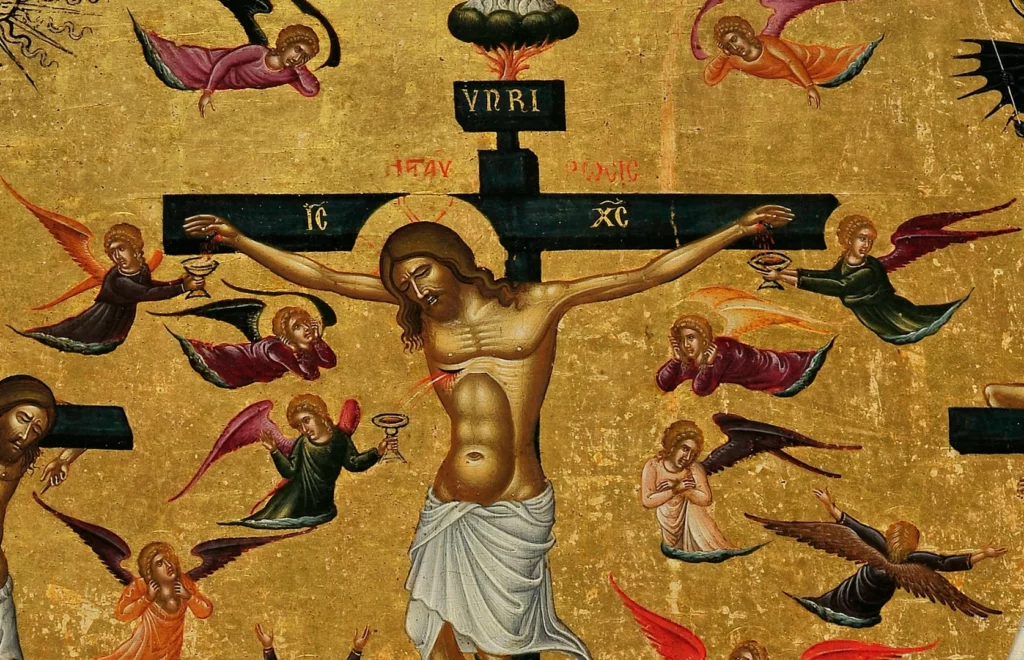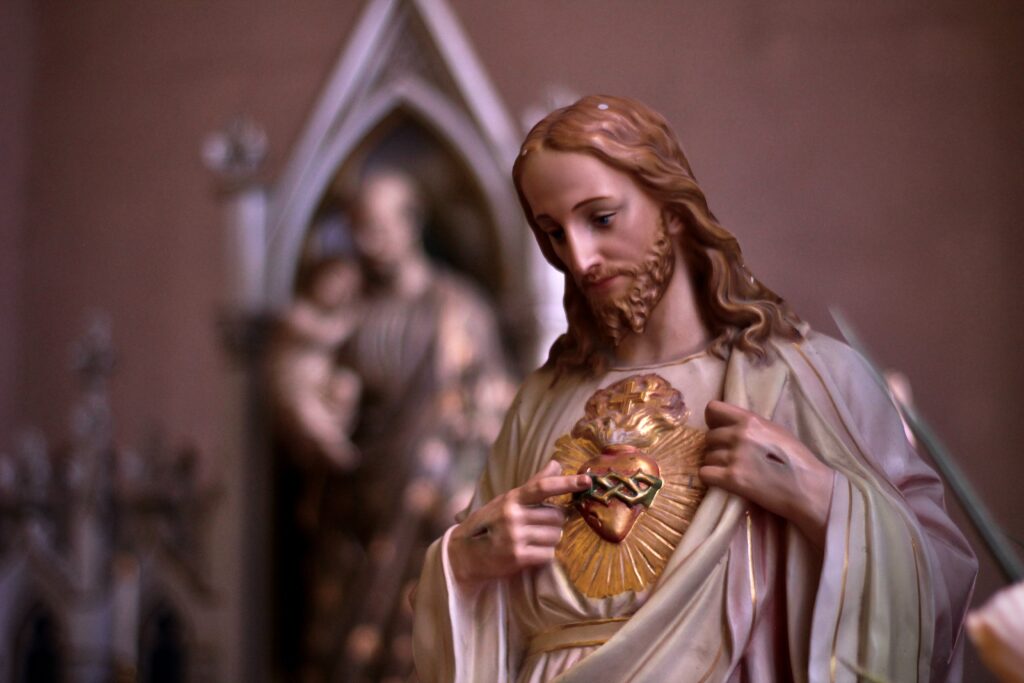3 Ways Catholic Radio Supports Devotion to the Scapular
Written by catholicradio on July 10, 2023
The Catholic Church has seven sacraments and many sacramentals. What’s the difference? “The sacraments are efficacious signs of grace, instituted by Christ and entrusted to the Church, by which divine life is dispensed to us.” (CCC, 1131)
Sacramentals “are sacred signs which bear a resemblance to the sacraments. They signify effects, particularly of a spiritual nature, which are obtained through the intercession of the Church.” (CCC, 1667) Examples of sacramentals are holy water, blessed salt, the rite of exorcism, the rosary, and the scapular.
The History of the Scapular
In 1165, St. Simon Stock was born in England. At age 12 he retreated to the forest and spent 20 years of solitude as a hermit. He then reentered society, studied and became a priest, then returned to his hermitage.
About this time in the early 13th century, monks in the Holy Land sought official recognition. Their origin extended back hundreds of years and by some accounts, not only pre-dated the birth of Christ, but was rooted in the ministry of Elijah on Mount Carmel. This group became the Carmelite order.
After St. Simon’s ordination, when Carmelites arrived in England, the Blessed Virgin revealed his calling: to join the Carmelite order. They led an ascetic, contemplative lifestyle along with particular devotion to the Blessed Virgin Mary. She instructed St. Simon to leave the hermitage and join the order.
Later in life she appeared to him again in a private revelation with a multitude of angels. She held the monastic scapular of the order. The garment was a piece of cloth, 14 to 18 inches wide from one shoulder to another, and extended almost to the feet in the front and back. Over time two segments of cloth sometimes covered the shoulders, making a cross.
Mary’s words conferred a privilege for St. Simon and all Carmelites, that whoever died in the garment would be preserved from eternal fire.
As years passed, lay people who practiced the charisms of various religious communities (the Third Order), served alongside them and were granted the privilege of being buried in the monastic habit. This was also true for those who were attached to the Carmelites.
The scapular was sometimes shortened or worn in miniature. Confraternities formed (a brotherhood for a religious or charitable purpose), and scapulars as they exist today were created and promulgated.
However, that is not the end of the story. The Blessed Virgin Mary also appeared to Pope John XXIII, who wrote of his experience in a papal bull: “I, the Mother of Grace, shall descend on the Saturday after their death and whomsoever I shall find in purgatory I shall free so that I may lead them to the holy mountain of life everlasting.”
Anyone can wear the brown scapular after being enrolled in the Brown Scapular Confraternity.
It is important to remember that sacramentals, including the scapular, are not good luck charms and have no power in and of themselves. They are devotional aides, or holy reminders, to call our attention to the Holy Trinity throughout our days as we strive to live a holy life.
To learn more about the history of the scapular, the devotion, and conditions that must be fulfilled to obtain what the Blessed Virgin Mary promised, you may find these websites helpful:
- Catholic Encyclopedia at Catholic Answers: Scapular
- The History of the Scapular
- The Scapular Devotion
- Sisters of Carmel
- Why do we celebrate the feast of Our Lady of Mount Carmel?
Three Ways Catholic Radio Supports Devotion To the Scapular
Catholic Radio Network has five livestreams. You can view the Programming Schedule, or perhaps ask the Holy Spirit to guide you. Although you may not realize it, there is a connection between what you listen to and sacramentals. Here are three ways Catholic radio supports devotion to the scapular:
1. Catholic radio programs address personal spiritual growth, including the use of devotions and sacramentals like the scapular.
Catholic radio hosts a variety of content: the Holy Mass, homilies and retreat talks, call-in programs, and also speakers who comment on the culture through a Catholic lens.
Discussions about popular devotions, reception of the sacraments, and spiritual “helps”, like the use of sacramentals, permeate program content. You will learn about saints, devotions, and prayers to help you on your spiritual journey.
2. The Blessed Virgin and her role in our lives is regularly referred to on Catholic radio.
While the scapular is a sacramental that draws our minds and hearts to God, the scapular in particular calls to mind two Marian doctrines. First, Mary is the mother of God and our spiritual mother.
Second, Mary is a mediatrix of grace through the mercy of God. This reinforces her role as our intercessor. She is a model for all Christians because she always leads people to her Son.
3. The purpose of Catholic radio is to point to Jesus and do as He instructed His disciples. The scapular does the same.
Catholic radio programs point to God, instruct and exhort the faithful, and encourage continual personal conversion. The scapular serves the same purpose to remind us that we belong to God, encourages following God, and reminds us to do our best to live a life of virtue according to our state in life.
Using our senses to listen to and ponder the truths on Catholic radio complements the holy attire given to St. Simon in the scapular. In this way, both Catholic radio and the scapular serve to help transform us from the inside out.
We invite you to listen to Catholic Radio Network online, find your local station, or download our free app for Apple and Android.




